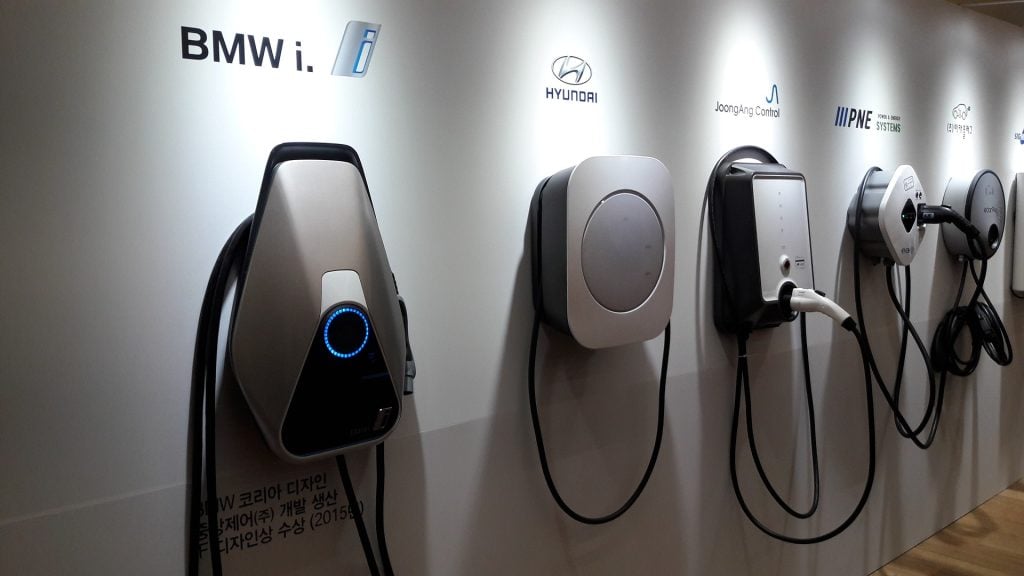As the world pivots toward a more sustainable future, electric vehicles have emerged as a promising solution to combat climate change and reduce our reliance on fossil fuels. With their zero tailpipe emissions and impressive performance capabilities, EVs have gained widespread popularity. However, alongside their numerous advantages, a growing concern has emerged in recent years – the increasing frequency of EV battery fires and the challenges faced in extinguishing these fires.
In this article, Cheapinsurance.com delves into the reasons behind the rising incidence of EV battery fires and what to know about insurance coverage in the event of an EV fire in your garage.

The surge in EV battery fires
Electric vehicle battery fires have garnered significant attention due to their potentially catastrophic consequences. While EV battery fires are still relatively rare compared to traditional gasoline vehicle fires, their prominence in the media and public discourse has highlighted the need for better understanding and mitigation of this issue.
Several factors contribute to the increasing incidence of EV battery fires:
- High-energy density batteries: Modern EVs rely on lithium-ion batteries known for their high energy density, which enables longer driving ranges and enhanced performance. However, this high energy density also presents a higher risk of thermal runaway – a self-sustaining reaction that generates heat and can lead to fires.
- Accidents and impact: EV battery packs are vulnerable to damage in the event of a collision or impact. Any compromise to the battery’s integrity can result in short circuits, overheating, and potential fires.
- Manufacturing defects: Like any complex technology, EV batteries can have manufacturing defects. A single faulty cell or component within the battery pack can trigger a chain reaction leading to thermal runaway.
- Battery aging: Over time, all batteries experience degradation, including those in EVs. As batteries age, their internal components can become more susceptible to malfunction, increasing the risk of fires.
Not Just EVs: Lithium battery fires in electric vehicles, e-bikes, and e-scooters
In recent years, the rapid adoption of electric vehicles (EVs), e-bikes, and e-scooters has brought about a transformative shift in the transportation industry. These cleaner and more efficient alternatives have gained popularity for their eco-friendly credentials and reduced dependence on fossil fuels. However, this electric revolution has also brought to light a growing concern: the increasing trend of lithium battery fires in these vehicles.
A looming threat
Lithium-ion batteries, hailed for their high energy density and long cycle life, are the primary power sources for EVs, e-bikes, and e-scooters. These batteries have become the industry standard due to their ability to store large amounts of energy in a compact and lightweight package. However, as the adoption of these vehicles has surged, reports of battery-related incidents, particularly fires, have also been on the rise.
The statistics speak
Data from various sources highlight the escalating nature of the issue. According to a report published by the National Highway Traffic Safety Administration (NHTSA) in 2022, the number of reported EV battery-related fires increased by over 44% in the previous year alone. Furthermore, a study conducted by the National Fire Protection Association (NFPA) revealed that between 2014 and 2018, fire departments in the United States responded to an estimated average of 25,000 annual battery-related fires, with a notable portion linked to EVs, e-bikes, and e-scooters.
The anatomy of lithium battery fires
Understanding the underlying causes of these fires is crucial to devising effective preventive measures. Lithium battery fires often stem from a phenomenon known as “thermal runaway.” This occurs when a battery undergoes a self-perpetuating chemical reaction that generates intense heat, leading to the release of flammable gasses and, in some cases, explosions. Factors such as manufacturing defects, external physical damage, overcharging, and exposure to high temperatures can trigger this chain reaction.

What to do after an EV battery fire at home
Picture this: You’ve just parked your electric vehicle in your home’s garage after a long day. Suddenly, an unexpected event leads to a battery fire, causing damage to both your EV and your garage. Now comes the critical question – which insurance policy should you turn to for coverage?
Your car insurance policy typically covers damages to your vehicle resulting from accidents, theft, or vandalism. However, an EV battery fire inside your garage might also qualify under your car insurance coverage if the fire was caused by a malfunction or defect in the vehicle’s battery system. Your car insurance should cover repairs to your EV, provided you have comprehensive coverage. Keep in mind that car insurance covers your vehicle, but it might not extend to any damage to the garage or its contents.
Homeowner’s insurance is designed to protect your home and its contents against various perils, including fire. If an EV battery fire starts within your garage and causes damage to the garage structure and its contents, or even spreads to other parts of your home, you might consider filing a homeowner’s insurance claim. Homeowner’s insurance could cover the structural repairs, damaged personal property, and additional living expenses if you are temporarily displaced from your home due to the fire.
Factors influencing the decision
Cause of the fire:
Determining the cause of the EV battery fire is crucial. If the fire resulted from a vehicle malfunction or defect, your car insurance might come into play. However, if the fire was triggered by an external factor, such as an electrical wiring issue in your garage, your homeowner’s insurance might be the appropriate choice.
Extent of the damage:
Evaluate the scope of the damage. If the fire was contained to the vehicle and did not significantly impact your garage or home, your car insurance might suffice. But if the fire led to substantial damage beyond the vehicle, such as structural damage to the garage or smoke damage to your home, homeowner insurance might be the better option.
Policy coverage and limits:
Carefully review the terms and coverage limits of both your car insurance and homeowner insurance policies. Understanding what each policy covers and to what extent can help you make an informed decision.
In summary
Dealing with an electric vehicle battery fire inside your home’s garage can be a daunting experience, but understanding your insurance options is essential to navigating the situation effectively. Remember that every insurance case is unique, and the best course of action depends on various factors, including the cause of the fire and the extent of the damage. If you find yourself facing such a situation, it’s advisable to promptly contact your insurance providers, provide accurate details, and seek guidance to ensure that you receive the appropriate coverage for the damages incurred.


